mytest
Books etc. by ARUDOU Debito (click on icon):
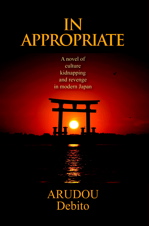
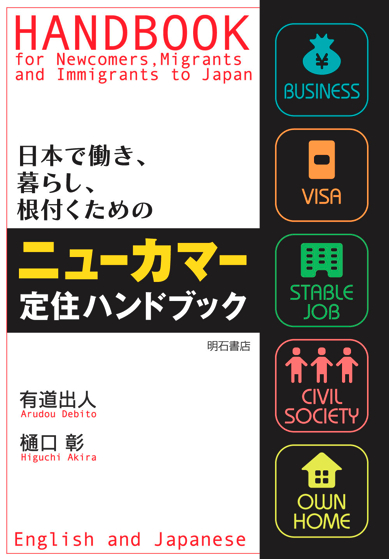
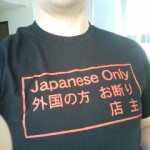

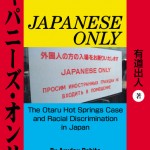
![]()

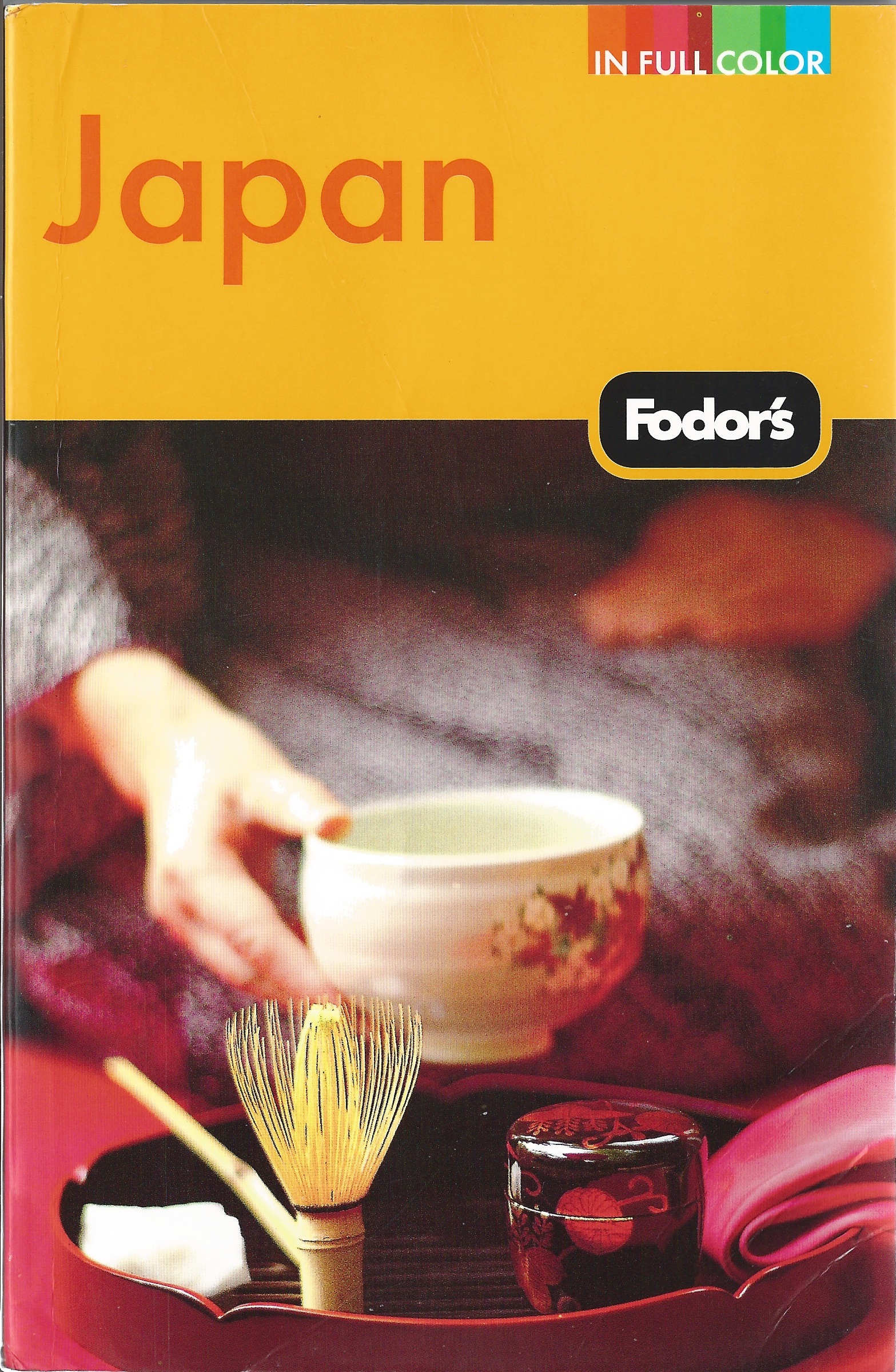
UPDATES ON TWITTER: arudoudebito
DEBITO.ORG PODCASTS on iTunes, subscribe free
Hi Blog. Something that came up on one of the mailing lists I’m on (a JALT group called PALE) is an interesting debate on physical education in Japan as part of cultural education in Japan — the new requirement for students to take a martial art in Junior High School as an attempt to “transmit tradition” and develop one’s inherent inner Japanese-ness.
My basic objection with all this education on “what it means to be Japanese” (which reasserted itself with former PM Abe’s reforms of the Basic Law of Education in 2006 to foster “an attitude that loves the nation“) is that, given the binary approach to “being Japanese” (especially when defined as “being unique”, with an added contrast to “being foreign”), it encourages people of NJ roots to be excluded (or else to deny their own diversity as incompatible). But the debate on PALE added a new dimension — an unnecessary degree of danger, given how martial attitudes in Japan often invite physical brinkmanship in unaccountable sports coaches over their young athletes. It’s tangental to the discussion of diversity in Japanese education, but read on as it’s good food for thought. Used with permission. Arudou Debito
//////////////////////////////////////////
October 2, 2012
From RA
[PALE] Concerns about compulsory judo in junior high schools
PALErs: Although not directly connected to PALE’s brief, this issue is so important to anyone involved in the Japanese education system that it deserves exposure on this forum.
As most of you will know, traditional martial arts became compulsory in junior high schools this year.
This is a direct result of the new Fundamental Law of Education introduced the last time Abe was prime minister (so nice to see him back at the helm of the LDP!) which called for a return to traditional Japanese values.
In most cases the martial art that has been chosen is judo.
Many parents of young children are very concerned about this.
Since 1983 there have been 108 recorded deaths of children in judo class or school club activities in Japan. With a huge increase in the number of participants it can be assumed that the death rate will increase in the future.
Nobody has been prosecuted for any of these deaths.
As a result, a group of parents and activists have set up the Japan Judo Accidents Victim Association.
Their English language web site is here:
I hope that PALE can do its bit to spread awareness of this serious issue. Yours, RA
//////////////////////////////////////////
From: MP
Thanks RA,
For me the most important link was on the left side for the Al-Jazeera program broadcast from Osaka. The older Japanese judoka/MD is opposed to the new system. I’ve forwarded the link to all PE teachers at my place. Yours, MP
//////////////////////////////////////////
From: EF
I had not heard about this so I appreciate you sharing the information. I do think that an important aspect of your alarm is missing. 108 Children have died in 27 years of judo practice in schools – but there’s no mention of the total # of youth who participated safely in judo (which I’d guess is in the thousands nationwide). So, while the death of 108 children is sad, it’s not the alarmist statistic the website is portraying. How many children are killed walking to school along crowded narrow streets? How many are killed riding bicycles on busy roads? I don’t know but I’d guess it’s no small number either.
The fact that, “Nobody has be prosecuted for any of these deaths.” does not necessarily mean that it’s a conspiracy to hide the facts. Maybe all 108 were deemed to be accidents – something that’s VERY common among youth sports programs worldwide. Let us consider our own childhoods; if a person was injured playing sports, was there a lawsuit or criminal proceedings for all cases? These 108 cases which resulted in death (which the website states were due primarily to brain injury) could have been tragic accidents by kids not paying attention to how they were flipping or being flipped. Without further details of each case, it’s premature to throw up our arms in protest against the implementation of judo in junior high schools.
Sports are dangerous and a measure of risk is involved in simply rising from one’s futon in the morning. Throwing up alarm flags to stop children from learning a traditional Japanese sport which teaches discipline and self-defense–something which I think many would argue is lacking in today’s youth—is not a prudent step in the big scheme of things. You may argue that their goal is not to ban judo, but to “to support victims and find ways to reduce death and serious injury among students” as stated on their website. But the tone of the language implies to me that they desire more than just an “improved safety regime.” If I am misreading this, I apologize.
I agree that an emphasis on safety needs to be made so that we can minimize risk, but banning a sport because somebody might get hurt is like banning bicycles because someone in the past had an accident (a current policy at my daughter’s junior high school). Thank you for allowing me to voice my concerns about the power of PALE’s membership jumping behind this issue without truly looking at the big picture. Have a great week and let the flaming commence. Yours, EF
//////////////////////////////////////
From: RA
EF, thank you for your questions.
First of all there are quite a lot of options available between banning a sport and making it compulsory. So, yes you are misreading the site if you think it is calling for a ban. Although you are free to contact the campaign organisers if you want more clarification.
If you want further details of each accident, please go back to the site and click on ‘Download’ and look at the details of the deaths.
There are some heat stroke and heart attack cases but most deaths are due to brain contusions or subdural hematomas. These are directly caused by being thrown. There are also some suffocations caused by choke holds (sometimes by the teacher). This is NOT the same as falling off a bike. You are not supposed to fall of a bike or ride it into a fast moving car. You ARE supposed to throw your opponent in judo. I know almost nothing about judo and how someone is able to protect themselves when they fall. Clearly there are techniques for doing this and equally clearly they are not working for many school children in Japan. Making everyone do judo will only make this problem worse.
I do not agree with your implied notion that there is an acceptable number of deaths and serious injuries for any school sport. Rugby is a sport where serious injury can occur. However, over the years there have been changes in the rules of rugby in order to (successfully) reduce the number of accidents. Maybe this is the way to go with judo in schools.
On the subject of criminal prosecution, take a look at this Japan Times article from 2010:
Thursday, Aug. 26, 2010
108 school judo class deaths but no charges, only silence
Fatalities since ’83 highest rate in any sport; brain injuries abound
http://www.japantimes.co.jp/text/nn20100826f1.html
It describes some tragic cases where the police did try to get prosecutions but public prosecutors threw the case out.
It may be only a matter of time before a prosecution does stick. The only question is how many children will die between now and then.
Someone who knows judo much better than me (and is a fan) told me that judo is the most dangerous legal two-person sport: more dangerous than boxing. Is it a smart idea to make this sport compulsory for 12-year-old boys and girls?
As far as I have been able to find out deaths in judo world-wide are extremely rare – except in Japan.
With the making of judo compulsory it is a statistical certainty that the number of deaths will increase in the future if nothing serious is done to change the way judo is taught in Japan. Yours, RA
PS: You asked us to think of our own childhoods and the accidents that are bound to occur in school games. Well, when I think back I can clearly remember boys coming in to school on Monday morning with injuries sustained over the weekend in various sporting fixtures. I remember broken arms, black eyes, missing teeth etc. usually from rugby games. I knew one boy who lost his front teeth by, as he put it, ‘unwisely trying to catch a cricket ball in my mouth’. I think the closest I ever came to serious injury myself was when I was chased by a wild horse during a cross country run (but I managed to escape up a tree). When I was a teacher in a school near London I had to apply First Aid to a boy whose bare foot had been spiked by another boy’s running shoe. Try as I might I can’t think of any case of a child being killed or put in a coma during a school sporting activity in my school or any nearby schools. And the atmosphere is much more safety conscious in the UK now than it was then. We need to seriously ask if schools in Japan are doing all they can to protect the children in their care, and if they can learn from best practice in other school systems.
////////////////////////////////////////
From CB:
“Hai sai” (Okinawa dialect for konnichi wa) from Okinawa, everyone.
I think EF shares some good points (RE: it is always possible to overprotect children by erring too much on the side of safety…in fact, Stephen Pinker in his new book “The Better Angels of Our Nature” posits that one of the unfortunate side effects of the worldwide decline in violence is that kids are coddled and overprotected too much – e.g., being discouraged from playing outside due to kidnapping fears…child kidnapping by strangers is in fact extremely rare in developed nations).
However, 108 judo-related deaths in what are supposedly supervised classrooms still raises some alarms for me…namely, how qualified are the judo teachers, and what, if any, nation-wide mechanisms are in place to ensure adequate qualifications and quality control of said judo instructors? In fact, I think that someone brought up in a similar thread on PALE a number of months ago some stats showing that there are a fair number of unqualified judo instructors in Japanese schools. This wouldn’t surprise me – remember when the MonKaSho rushed English into elementary schools a few years ago without ensuring adequate EFL teacher training for the homeroom instructors who were expected to add English teaching to their already ridiculously busy schedules?
This compulsory judo has similar potential to be problematic (though with more serious consequences than a lack of EFL training of course!) if the new teachers in schools where judo instruction introduced for the 1st time are being rushed into these classrooms without proper training.
My daughter attends a private jr. high school in Okinawa where karate instruction has been mandatory for many years (as a way to promote Okinawan culture – this prefecture is the birthplace of karate). I doubt that karate will be replaced any time soon by judo, given the high pedigree of karate here, which also ensures that all instructors – 3 or 4 black belt teachers per class of 35 students – are well-qualified…I observed one of my daughter’s karate classes and was duly impressed by the teachers…in fact, Sakura-chan seems to think that some of them are “too strict” with regards, for example, to how the kids tie their belts. This is a good sign to me that they are watching kids very closely for safety, etc…indeed, that seemed to be the case during the class I observed.) Cheers, CB
/////////////////////////////////////
From: JT
I’ve done martial arts for almost 30 years, my first martial art was judo, when I was in second grade, and my father went with me (he received his black belt in an alternate system to Kodokan judo, Kodenkan in Hawaii, under Seishiro Okazaki) and I have a sandan in judo, so I’m more sympathetic to EF’s points.
As for learning how to fall, one usually first learns ukemi, which is how to take breakfalls. Having taught adults how to take breakfalls, it is much better to teach it to students when they are young. Less mass so less chance of injury, and more youthful flexibility. I do think some things should be done to make it safer. I have been told and I pass it on to my aikido students that learning how to fall is probably a bigger safety factor than thinking how martial arts is going to protect you from being mugged because whenever you don’t see a curb, or miss a step, you may need to fall correctly. I remember when I was a kid and my father got tripped by the dog running just in front of his feet at the top of 6 concrete steps at our house. He went down doing a judo style breakfall and got up afterwards. Later found out that he had cracked two ribs, but that is far better than breaking his neck.
I also think that there should be some compulsory sport in school. While the ideal would be to have several sports that students can choose from, judo has a number of advantages in terms of cost, facilities and participation. Judo also has an advantage in that it permits students of all sizes and builds to adequately participate. Team sports would have problems not only from the nature of the sport (how can you be sure students are getting the exercise they need), but also from the fact that students of particular builds are favored, while I can’t think of any other individual sports that provide exercise over the full range of body movements, with the possible exception of wrestling, though that is problematic for women (especially with male teachers) and has many of the same injury possibilities as judo. Swimming might be the ideal, but that is season dependent and requires specialised facilities.
I do worry that poor teachers, both those with inadequate training and those with behavioral problems are a worry, but I think that is more a problem with the way Japanese schools are staffed and their hierarchical nature. However, I don’t think that should be an indictment of judo.
For high schools, the compulsory sport is either judo or kendo iirc. I’m not sure about numbers, but kendo has the possibility of some particularly horrific injuries, specifically shattered shinai (practice swords made up of 4 bamboo slats) blinding or, in the worse case, killing practitioners when they go thru the eye and enter the brain. Furthermore, the gear makes it difficult to assess student injuries or problems like heatstroke until it is potentially too late.
I do think there are some things that should be done to improve safety as RA suggests. In junior judo in the US, chokes and armbars are not permitted and tsutemi waza (sacrifice techniques) are generally not taught. I realize that Japanese might balk at ‘watering down’ judo, but in the glance over the listed fatalities caused by judo, shime waza (chokes) seems to be a big factor. In addition, many of the other fatalities in the longer list occurred in tournament competitions. This problem arises when a match is fought and the person who is being thrown doesn’t want to lose the match and so refuses to take the ukemi and is thrown so that they hit their head or techniques that are even more risky (in that they don’t permit the uke (the person being thrown) much option in the ukemi) are used. While it is a judo fatality, I see it as the result of competition rather than the inherent nature of judo.
Again, I am biased, but judo is a great sport to learn as a kid, it lets you develop balance and strength without over emphasizing any particular part of the body, it requires very little money and ideally gives you a certain amount of confidence. Yours, JT
////////////////////////////////////
From: MP
I too am biased. I haven’t done it for years but I like judo. My
first introduction was in college and I recall that the teacher had
us loosening up and only practicing falls for the first classes.
(Note: Most universities in Japan do not have mandatory PE classes
but the University of Tsukuba does. Some students like this. Some
don’t.) Our small university has one campus for the visually
impaired. Judo is one of the main sports (the others are sound table
tennis, floor volleyball and blind soccer) and this year one of our
girls went to the Paralympics in London. Also, some of our students
join the U of Tsukuba clubs. It’s a great sport for the blind
because they can compete on an equal basis. But having said that,
after watching the Al-Jareeza program that was done in Osaka, and
listening to the interviewed parents and doctor, and seeing the boy
in the hospital bed, and reading the postings on this list, I have
some real concerns about the compulsory classes. Yours, MP
/////////////////////////////////////
From: EF
First, let me thank JT and MP for their input and insight into the world of judo. I’ve never played judo but my brother did in university and for a bit thereafter (he stopped when he moved to an Indian Reservation due to lack of partners). I agree, Robert, that it’s a very dangerous sport and the causes of death bear witness to this fact (thank you for directing me to the details).
In reviewing the list, there did seem to be about 25 or 30 which were incidental deaths not directly attributable to the sport itself but occurred in proximity to practice or competitions (heat stroke, dehydration, other medical issues, etc.). One pattern which was readily apparent was that the vast majority were due to the judoka’s head striking the mat and them suffering brain injuries / hematomas. I hope that this organization is able to push for the possibility of having the students wear headgear (similar to that worn in wrestling) to protect against such injuries. Doing so would add cost to the sports program (which I’m sure is already underfunded) so the likelihood may be low, but I do think it best to support this move as a group.
Anyway, thanks for raising this discussion and for everyone who added their two cents. I will definitely raise my concerns at the PTA meeting should I hear that my daughter’s school adopts compulsory judo in PE.
DEBATE ENDS
14 comments on “Interesting debate on martial arts as newly required course in JHS under Japan’s Basic Education Law reforms”
This is interesting, because in 1996 kendo was dropped from the compulsory school curriculum because its overtly religious nature (bowing to a kamidana) was deemed to violate the establishment clause of the Japanese constitution. I guess this is verification that judo is no longer budo, but now merely kakutogi, something I’ve been saying ever since the rule changes involving uniforms and point scoring were introduced to appease the overlords of television.
I was hospitalized for 2 weeks with concussion from a Judo related accident; I got thrown onto concrete off the mat. The teacher did nothing, and denied all responsibility. I guess he wasn’t paying attention. And there were not enough mats.
Judo is quite hardcore and is for the big boys. It was never compulsory, it was an option where I was from. I wonder if this is subliminal re arming of Japanese increasingly effeminate youth to toughen them up for some future confrontation with “tough” Koreans and Chinese?
Interesting post and comments. The safety issues that may arise with Budo really concern me, having participated in Uni clubs in Aikido at Shinjuku and J-Highschool Judo & Kendo during my time as exchange student in Funabashi, I’ve seen and experienced firsthand how intense it can get. Aside from the occasional bad falls and hits, even the exercises can be taken to risky extremes when peer(or sensei/sempai) pressure is involved, e.g. running for miles non-stop in groups around the city in scorching temperatures or even rain-slicked roads. I do hope the kids get qualified instructors, proper training, and medical assistance at the ready when they engage these activities.
IMO, another interesting aspect that may be worth looking into is the “discipline” that they instill to the students, which is essentially adherence to hierarchy/seniority/tradition etc. that may be used later on in order to conveniently have obedient drones for society. Not to mention the othering/bullying that may happen to kids that are NJ/Halfu ‘Beasts’ or physically disadvantaged kids that cannot ‘get’ the spirit of Budo.
Although on the “positive” side, Judo might give them good preparation in case their robots can’t take care of their elderly yet, at least they will be physically fit to start lifting cranky geriatrics all day long, and they will be mentally prepared for the abuse they get from their seniors and supervisors, if and when elderly care also becomes mandatory for students in the future. 🙂 That or being drafted to the SDF.
All safety issues aside, I think the fact that it is being made COMPULSORY is yet another disturbing nod to an ideological malaise that seems to be coming to a head in Japan. Academia in Japan has often taken a back seat to sports. Sports can sometimes be dangerous to individuals- but they are always a boon to institutions and administrators. While judo may present potential dangers to the individuals who are forced to take part in it, it is a godsend to right leaning Japanese leadership. There is a machismo to it that allows aggression to be channeled without breaking a set of carefully proscribed rules.
Add to that the very Japanese-ness of judo and you satisfy all the possible requirements of a Japanese right wing politician’s wet dream:
1. You get a resurgence of a traditional form of martial art (which according to Ishihara-foreigners are absolutely useless at).
2. You get hours of disciplined training that builds the body-but that can in SOME instances render the mind completely malleable to the whims of the trainer.
3. You get to compensate for a deep national insecurity that your country is becoming internationally irrelevant.
4. You have a potential generation of fighting fit recruits because you’ll need them due to the fact that you have thoroughly made a mess of things with every single neighboring country in the region.
5. You revisit your own greatness…Your own sense of national identity…You become a legend in your own mind again…because you’re failing to impress the world enough to be a legend in your own time.
I do not mean to speak disparagingly of judo by any means-but it seems like it is being hijacked for political purposes in Japan. And of course, this only a part of a much broader campaign by the government to indoctrinate future generations into how great their country is. I suppose it is too much to ask of the Abe’s of this world to believe that a county’s greatness should be a stand alone proposition that should not have to be literally pummeled into kids.
University students campaigning about sovereignty issues, Hashimoto’s “Political Training Schools”, teachers being sent for “re-education” and the list goes on. So compulsory judo is just the latest in a long list of institutionalized indoctrination. But as the economy worsens the judo-hold on educational freedom and intellectual honesty can only get tighter.
Japan needs to do SOMETHING. This looks to be just another desperate attempt to regain their historic superiority (the one that never actually existed), when all men were samurai (yeah, right), and the Japan war flag ruled asia…..
Well, this is a tricky one, isn’t it?
I have to agree that children should do plenty of sports at school. It not only stops them from ballooning on the MacDonalds, but team sports are great tools for socializing the individual, whilst individual sports (such as tennis) are great for individual character development. However, I also believe that the child should be offered (at least) a choice of two sports. In fact, for the benefit of the nations international sporting prowess, it is desirable that all children should have the chance to experience all sports at least once, so that they can decide which they would like to pursue in earnest at a later opportunity. I suspect strongly that the Japan fail in the Olympic Judo this year (lowest number of Olympic judo medals ever) is the main motivator behind this policy. If this is true, then it does really represent a kind of nationalistic, pride-driven, knee-jerk reaction to the situation.
I would (sarcastically) suggest that the problem is not due to the form of modern sports judo, nor the size and mentality of the NJ ‘beasts’, but rather point the finger straight at the hearts of the Japanese judo team. What the hell was wrong with them? Why didn’t they ‘ganbaru’ more? Were they lacking in ‘unique Japanese kokoro’? Perhaps someone needs to scrutinize their family registry more closely to make sure that they are ‘proper’ Japanese, because (as we all know), the Japanese are special!
I do appreciate that as a contact sport, judo is likely to incur some injuries, and freak accidental deaths, but so does rugby, and that ‘football’ that Americans play. Wrestling is, I am led to understand, a common sport in American schools, which also carries a risk of accidental injury or death, and yet, I am sure that we would all agree that these sports (provided they are not compulsory) should not be banished from school life. The key is proper training of instructors, and safe environments. I think that it is these pints that would cause me concern in Japan. Should my children express a desire to learn any budo, the first thing that I would check would be the reputation of the dojo and the sensei. I would not be satisfied if the BoE attempted to force my children into practicing judo at school without first ensuring transparency regarding the judo senseis qualifications to teach; after all, where are schools supposed to find all these qualified judo teachers all of a sudden?
At the heart of this problem, for me, is the fact that all Japanese traditional budo, whatever the claimed historical heritage may be, is nothing more than a Meiji-era re-imagining of what Meiji-era Japanese thought the samurai were doing, given a veneer of sporting terminology in order to restart after a ban that GHQ imposed on post-defeat Japan. In that respect, all Japanese budo should be viewed as Imperial-era tools for incultrating a shinto based world view with the Emperor at its head, and a social scructure of strict hierarchies. Budo is a system of social control. It is based on physical force and bullying to ensure subservience. I have seen this kind of bullying at university level in Japan; beatings and slaps in the face, forced head shavings and such.
It serves to reinforce exactly the kind of mentality that the war was fought against, and on that basis, budo should be resisted. In fact, some younger practitioners regularly oppose governing bodies attempts to ‘return to the sports true origins’. This ‘return’ is implemented through a process of slow and incremental removal of post 1953 sporting aspects through a variety of subtle rule changes by vague re-wording. This is, I’m afraid to say, the true heart of budo. This is the ‘unique’ Japanese aspect that NJ ‘beasts’ can never understand, because by it’s very nature, it is something that the old men of budos various governing bodies can never speak out loud. The ‘true heart’ of budo is this; All men are inferior to the Japanese, and all Japanese are subordinate to the Emperor who governs by the natural will of heaven (in the Confucian sense). That was the conclusion of my two years of kendo research.
The very fact that a pastime of any kind can only be kept alive by making its practice compulsory shows us that there is no popular interest in doing so. Why bother?
For those who (like I, after all, I have two daughters) despair at the affected or real effete habits of the Japanese male, please remember that I would rather deal with an emasculated, petty, petulant, passive-aggressive, impotent man-child who can’t resist a glimpse of himself in any reflective surface, than deal with a rapist-torturer-murderer in uniform, blindly following orders, secure in the belief that it was his ‘proper place’ to do so.
It seems this is just going to involve the students doing judo in their PE classes, right? I thought this was happening already (it certainly happened at the JHS I taught at ten years ago). If so, not too bad.
Most of the problems come from judo clubs at schools, where the sadistic coach/sempai meme can kick in. I’d like to see more details before getting all het up 🙂
Maybe I’m biased, but I don’t see a budo program as being designed to develop one’s inherent Japaneseness (although I can see how you might interpret it that way)
Being a budo enthusiast working in a Japanese JHS I have a number of concerns about how these programs are implemented, and very few of those are relevant to this blog. And FWIW, I remember during my exchange student days being harassed by another student for my lack of skill in baseball – and for not being Japanese.
My take is that budo is a special subset of Japanese culture which most Japanese do not understand. The problem is that it gets watered down and condensed into what can be taught in 3 weeks in P.E. classes. The martial art of choice is judo because it requires less equipment and specialist skill than kendo, kyudo or sumo. But the P.E. teacher may have only done a little judo at university as part of P.E., and takes a 3 day refresher course each year… certainly not the kind of level I would want teaching judo.
Budo classes have a lot of potential, provided they are taught correctly – including the non-physical aspects.
I don’t have a problem about teaching martial arts to the students at mid-school in general. Kids really need an exercise and it will help their learning, too. My concern, however, is the ambiguity (or an absence) of accountability measures for schools, teachers and students. Recent news of school bullying, which turned into tragedy, shows that there is a systematic problem with substandard academic discipline. Schools really need to tackle the issue seriously, since martial arts could become another outlet for abusive practice of bullying and violence, if misguided.
@JDG:
Wow!
“For those who (like I, after all, I have two daughters) despair at the affected or real effete habits of the Japanese male, please remember that I would rather deal with an emasculated, petty, petulant, passive-aggressive, impotent man-child who can’t resist a glimpse of himself in any reflective surface, than deal with a rapist-torturer-murderer in uniform, blindly following orders, secure in the belief that it was his ‘proper place’ to do so.”
That’s some smoking prose, but accurate, I think. My feeling is that we aren’t in danger of most Japanese men becoming like the guys who filled the ranks in 1930. That ship has sailed. Too much soft living has rendered them herbivorous, as you say. My feeling is that if they ever did go to war with China or whoever else, they’d quickly beat a retreat when supplies of hair gel ran short at the front.
If the motivation for making it compulsory is purely ideological, that’s enough reason, in my mind, to be vehemently opposed. I can understand how some would like to preserve ‘Japanese values’, whatever those are, for future generations, but that’s not the job of government. Society decides its own values; a majority, or, even worse, a vocal minority deciding for others what world view, what view of their country and their identity their children should be raised with, should not be accepted. Of course, it happens in any country with compulsory education to some extent, but explicitly formulating a policy goal of indoctrinating the children of parents whose opinion isn’t asked with a goverment-approved view of ‘what it means to be Japanese’ and with nationalist feelings is pushing it, in my opinion…
I need to follow Japanese politics more. Is there any national politician in this country that opposes plans like these for reasons like these?
— MP Tsurunen of all people should. But he doesn’t. He’s enjoying his prestigious sinecure. Even gaijinizing himself to accommodate “Japanese values”. Not much hope of representation there.
Guys, the budo as compuslsory studies had been in the pipeline for years, nothing to do with Japan’s poor showing at the Olympics. (Too bad P.E. classes won’t teach that Jigoro Kano was opposed to using judo for nationalistic purposes, and that the Kodokan didn’t have a kamidana while he was personally in charge; or that the technique karagaruma was taken from wrestling…)
IFAIK, P.E. classes already had a budo element, just that it was an option between budo or dance.
Remember folks, budo is not in and of itself a nationalistic/ jingoistic ideal. Heck, look at today’s English textbooks if you want to see some jingoistic ideology at work. And, as I’ve already stated, bullies can use any sporting activity to be sadistic to others.
Like anything – it depends on who’s teaching it.
#6
“For those who (like I, after all, I have two daughters) despair at the affected or real effete habits of the Japanese male, please remember that I would rather deal with an emasculated, petty, petulant, passive-aggressive, impotent man-child who can’t resist a glimpse of himself in any reflective surface, than deal with a rapist-torturer-murderer in uniform, blindly following orders, secure in the belief that it was his ‘proper place’ to do so.”
Speaking as a woman, there is a middle ground! Most men – yes, even in Japan – are neither one nor the other.
I for one believe this is a good idea. Not for the reasons you may think but for the way I was brought up. When I was in school our grades 1-9 P.E teachers taught us all sports…Kendo,Karate,weightlighting,snow shoe tracking,hockey,dance etc…All sports and all kids together. It made me a better all around player.
I`ve lived in Japan for 15 years and taught in all levels of the school system here. Teaching the boys just soccer, baseball and running. The girls just volleyball,table tennis and running is not really helping them. Opening up their minds and bodies to other things make them better I believe.
I asked the JH P.E teacher and Principal in my school if I could teach them the art of throwing a frisbee for a class or two. It was hard at first because almost none of them could even throw at all. By the time I was done (5-6 classes) we were playing frisbee golf and football.